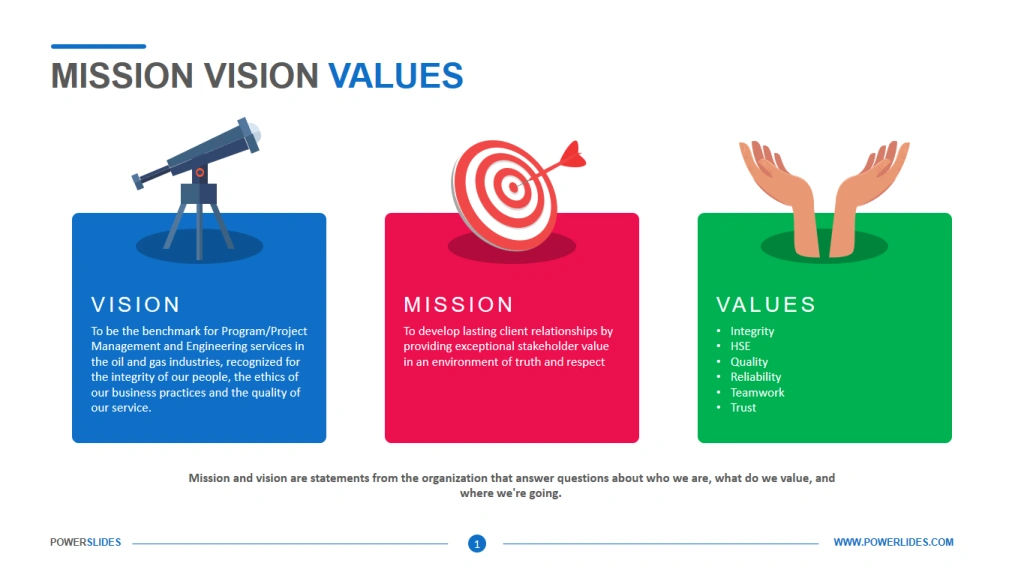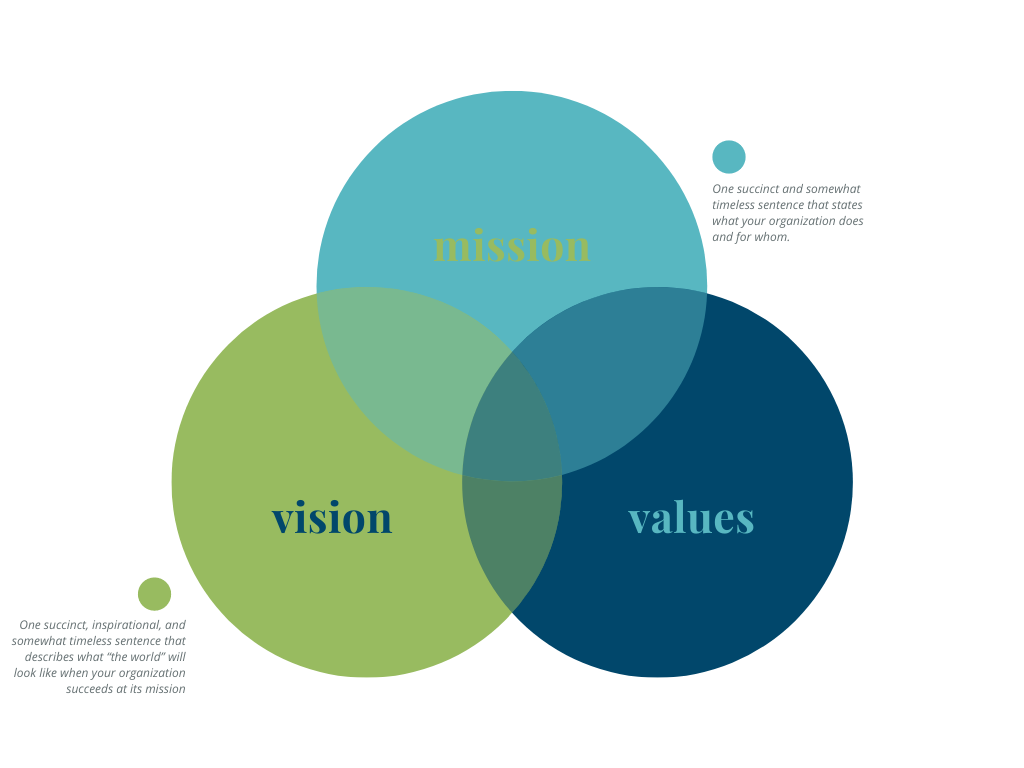Mission and vision statements are foundational tools that define an organization’s purpose and aspirations. A mission statement articulates what your organization does today—its core purpose and approach—while a vision statement paints a bold picture of where you aim to be in the future. Together, they guide strategy, inspire teams, and communicate your value to stakeholders. This guide dives into how to craft compelling mission and vision statements, their key differences, and practical steps to make them resonate with your audience, drawing inspiration from real-world examples.
Understanding Mission and Vision Statements
- Mission Statement: Defines your organization’s current purpose, including what you do, who you serve, and how you differentiate yourself. It’s grounded in the present and answers, “Why do we exist?”
- Vision Statement: Describes your organization’s long-term aspirations, outlining the future you’re working toward. It’s ambitious, forward-looking, and answers, “Where are we going?”
Key Differences
| Aspect | Mission Statement | Vision Statement |
| Focus | Present-day operations and purpose | Future aspirations and goals |
| Purpose | Defines what you do and for whom | Inspires by outlining the desired future state |
| Example | “We connect people to healthier food choices.” | “A world where everyone eats sustainably.” |
Why Mission and Vision Statements Matter
- Mission Statements:
- Align teams around core values and objectives.
- Clarify your organization’s purpose for customers and stakeholders.
- Differentiate you from competitors by highlighting unique strengths.
- Vision Statements:
- Provide a roadmap for long-term planning and decision-making.
- Inspire employees and stakeholders with a shared goal.
- Keep focus on the bigger picture amidst daily challenges.
How to Craft a Mission Statement
A mission statement should be clear, concise, and reflective of your organization’s essence. Follow these steps to create one:
1. Identify Core Elements
Answer these questions:
- What do you do? What products or services do you provide?
- Who do you serve? Who are your primary customers or beneficiaries?
- What makes you unique? How do you stand out from competitors?
Example: For a nonprofit focused on education:
- What: Provide free tutoring and resources.
- Who: Underserved high school students.
- Unique: Personalized, technology-driven learning plans.
2. Draft and Refine
Combine your answers into a concise statement. Experiment with wording to make it engaging and memorable. Avoid jargon or generic phrases like “best-in-class.”
Draft Example: “Empowering underserved high school students with personalized, tech-driven tutoring to unlock their academic potential.”
3. Seek Feedback
Share drafts with employees, stakeholders, and customers. Ask:
- Does it reflect our core purpose?
- Is it clear and inspiring?
- Does it differentiate us?
Refine based on feedback to ensure clarity and alignment.
Final Example: “We empower underserved students with free, personalized tutoring to excel academically and beyond.”
How to Craft a Vision Statement

A vision statement should be bold, aspirational, and forward-looking. Here’s how to create one:
1. Envision the Future
Consider where you want your organization to be in 5–10 years:
- What impact do you want to have on your industry, community, or the world?
- What does success look like?
Example: For the same nonprofit:
- Impact: Every student has access to quality education.
- Success: A world where academic opportunity gaps are eliminated.
2. Craft an Aspirational Statement
Write a concise, inspiring statement that captures your long-term goal. Use vivid language to evoke emotion and ambition.
Draft Example: “A future where every student, regardless of background, thrives through equal access to education.”
3. Test and Polish
Share with stakeholders to ensure it inspires and aligns with your values. Refine for brevity and impact.
Final Example: “A world where education empowers every student to succeed.”
Examples of Mission and Vision Statements
Nonprofit: Khan Academy
- Mission: “To provide a free, world-class education for anyone, anywhere.”
- Vision: “A world where everyone has access to a quality education.”
Tech: Tesla
- Mission: “To accelerate the world’s transition to sustainable energy.”
- Vision: “To create the most compelling car company of the 21st century by driving the world’s transition to electric vehicles.”
Retail: Patagonia
- Mission: “We’re in business to save our home planet.”
- Vision: “A world where business and environmental responsibility go hand-in-hand.”
Synonyms for Vision to Enhance Your Statement
To add variety and depth to your vision statement, consider these alternative words:
- Aspiration
- Goal
- Ambition
- Dream
- Future
- Purpose
- Destination
- Horizon
Example Usage: Instead of “Our vision is a sustainable future,” try “Our aspiration is a sustainable world.”
Common Pitfalls to Avoid
- Being Too Vague: Avoid generic phrases like “be the best.” Specify what makes you unique.
- Confusing Mission and Vision: Ensure your mission is about now and your vision is about the future.
- Lack of Engagement: Make statements memorable and inspiring, not dry or overly technical.
- Ignoring Stakeholders: Involve employees and customers to ensure buy-in and relevance.
Integrating Mission and Vision into Your Organization
To make these statements more than words:
- Embed in Culture: Share during onboarding, meetings, and decision-making processes.
- Align Actions: Use them to guide strategy, projects, and performance evaluations.
- Communicate Widely: Display on your website, marketing materials, and internal documents.
- Revisit Regularly: Update as your organization evolves to stay relevant.
Conclusion
Crafting effective mission and vision statements requires introspection, collaboration, and creativity. A strong mission statement grounds your team in purpose, while a compelling vision statement inspires progress toward a bold future. By following the steps outlined and learning from real-world examples, you can create statements that unify your team, resonate with stakeholders, and drive your organization forward.



